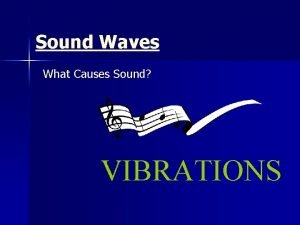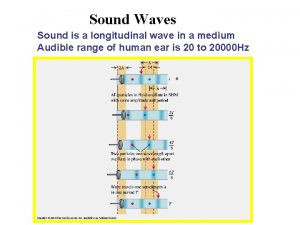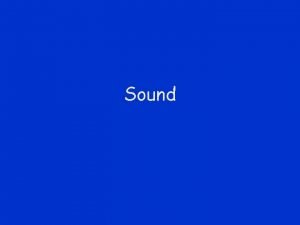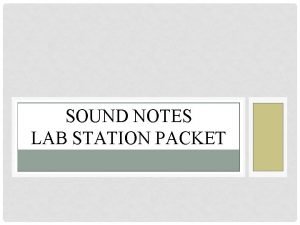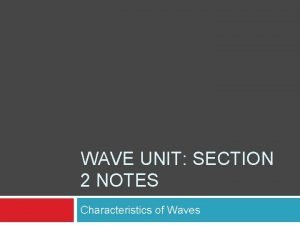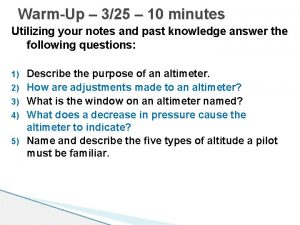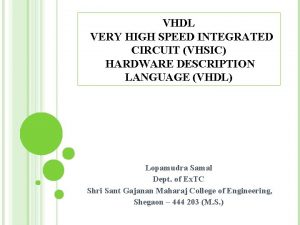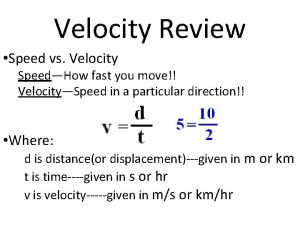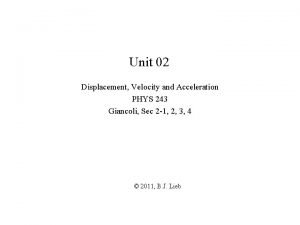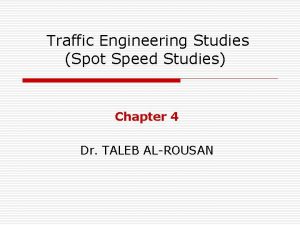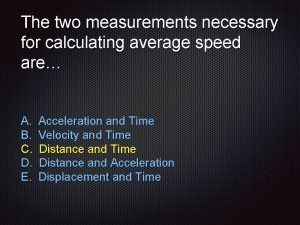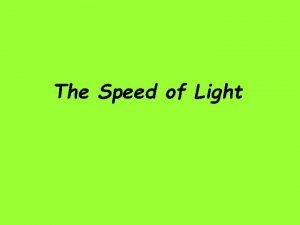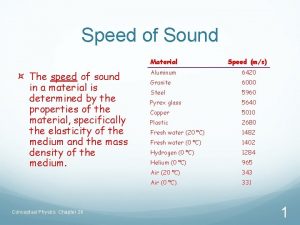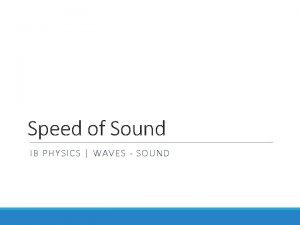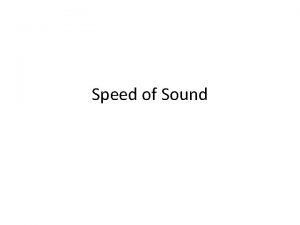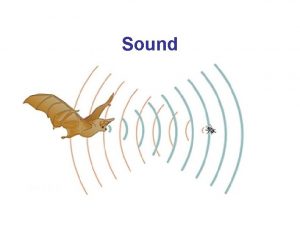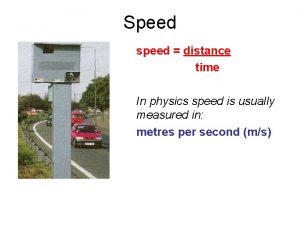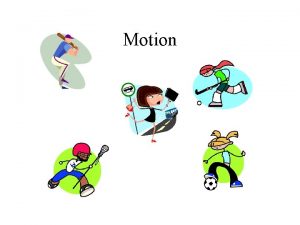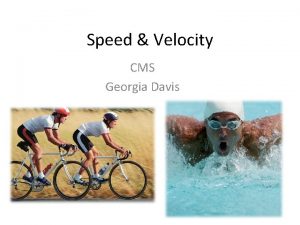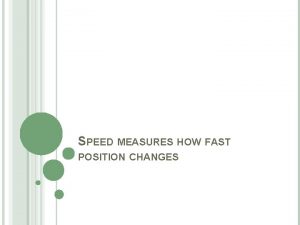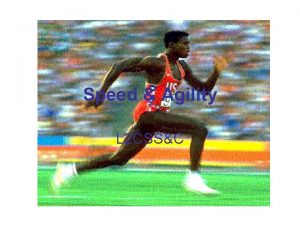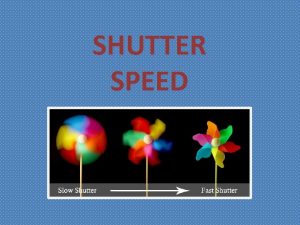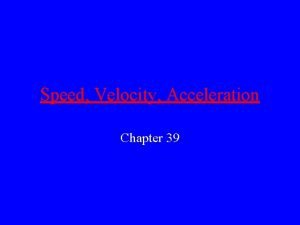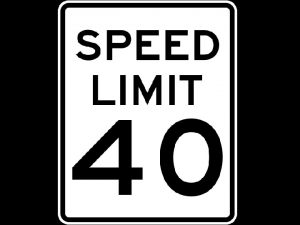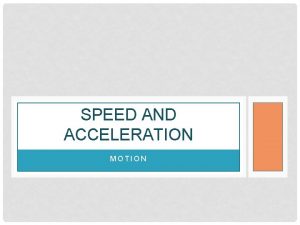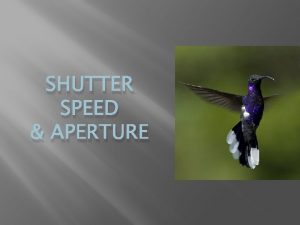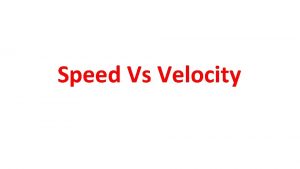Sound Part 2 Speed of Sound In general




































- Slides: 36

Sound – Part 2

Speed of Sound • In general, the speed of sound is: • Speed in solids>speed in liquids>speed in gases • Speed of sound in air: • v = 331 {(1+ T/273)}1/2 where T is in Celsius • Example: At a temperature of 100 degrees Celsius the speed of sound in air is 387 m/s.

Velocity of sound in air Not on test – just FYI

What affects speed? • The warmer the air, the faster the molecules are moving, the faster the sound travels. • The more humid the air, the less dense it is, the faster the sound travels. (Lower mass = lower inertia = easier to move. ) • Sound moves fastest in Hydrogen.

Recall…


Side by side:

Speed of Sound in a Solid: Y = Young’s Modulus B = Bulk Modulus Both are “stretching forces”

Example 1: • The bulk modulus of elasticity of air is 1. 41 x 105 N/m 2 and its mass density is 1. 29 kg/m 3. Calculate the speed of sound waves in air. • Solution: Using the formula • v = (B / ρ )0. 5, we get: v = [1. 41 x 105 / 1. 29] m/s = 331 m/s. (Speed of sound in air at STP) •

Example 2: • The bulk modulus of elasticity of water is 2. 1 x 109 N/m 2 and its mass density is 1000 kg/m 3. Calculate the speed of sound waves in water. • Solution: Using the formula • v = (B / ρ )0. 5, we get: v = [2. 1 x 109 / 1000]0. 5 m/s = 1400 m/s.


General Wave Behaviors • Interference: When two waves occupy the same space at the same time. This can’t happen with physical objects, but since waves are energy being transported this can occur. • Reflection: When a wave bounces off a boundary. The energy returns in the same direction from which it came. • For Optics – • Refraction: When a waves changes speed (and often direction) when it enters a new medium. • Diffraction: The bending of a wave around a boundary. Also used mostly in optics.

Constructive and Destructive Interference: • When two or more waves are occupying the same space, one must use “superpostion” to determine the new effect. You add together algebraically the heights of the waves. • Constructive is when the waves interfere and the displacements have the same orientation. • Destructive is when the waves interfere and have opposite orientation.

• Snap shot from general wave behavior 4: 40

Fixed end reflection vs. Free End Reflection: • Dan Russell


• Snap shot 2: 02 Sound

Human Audible Range

Three Ways Humans Can Physically Distinguish Sounds: Frequency • – Interpreted by the brain as pitch • Intensity • – Interpreted by the brain as loudness • Note: intensity is a physical measurement of any wave but loudness is the interpretation of the brain. Volume does not go up in a linear way. • Harmonic content • - Interpreted by the brain as timbre (layering of frequencies)

Human Hearing • SS 8: 29

Dilution of Sound on the Inverse Square How does Energy relate to Amplitude? At a distance R the amplitude is A, but at a distance 2 R the A is 4 times greater, an at 3 R the amplitude is 9 times greater. The energy gets spread such E is proportional to A 2. How does energy relate to linear density? E is proportional to 1/(m/L) How does the Intensity relate to radius? I is proportional to 1/R 2 Why? Because as you move away from R to 2 R you have to spread that energy from Area at R out over 4 times the area.


How do you Calculate Intensity? • Intensity is the Energy per time traveling through a particular area. Energy takes time to travel. If you wait twice as long, then twice as much energy goes through that area, but this doesn’t double the intensity, just means more energy. So we want the rate at which energy goes through, or changes with time. That quantity is called what? ? • Power !

Formula: Intensity = Power/Area =E/(t x Area) Units? W/m 2 Sound doesn’t travel in circles like water waves, it travels in spheres, so the area is 4πr 2 • The further away you go, the quieter it gets. • •

Range of Intensity: • Sound has a cool range. • I for pain/bleeding from ears = 10 W/m 2 • But the faintest sound is defined as Io • and Io equals 1 x 10 -12 W/m 2 • This number is not fundamental by any means. • At this intensity, the molecules vibrate at less than 1 width per molecule. • I where stuff starts to break inside your ear is 1000 W/m 2

Notice! • The range is not 1 to 5 but 10 -12 to 10 W!! • 10, 000, 000 - 1013 power! • (Almost a quadtrillion - One thousand million, 1015) • That a huge range that we can hear. • Too big….

• So we made up a measurement of “Intensity Level” called Bells

Intensity Level, β, measured in d. B. β = (10 d. B) log (I/I 0) I = Io 10(β/10) The factor of 10 multiplying the logarithm makes it decibels instead of Bels, and is included because about 1 decibel is the just noticeable difference (JND) in sound intensity for the normal human ear. If the new intensity level increases by 10 d. B, the new sound seems approximately twice as loud as the original sound.


• Decibels provide a relative measure of sound intensity. • The unit is based on powers of 10 to give a manageable range of numbers to encompass the wide range of the human hearing response, from the standard threshold of hearing at 1000 Hz to the threshold of pain at some ten trillion times that intensity.

• Another consideration which prompts the use of powers of 10 for sound measurement is the rule of thumb for loudness: it takes about 10 times the intensity to sound twice as loud.


Table of Thresholds of Hearing • • • Hearing threshold 0 d. B 1 x 10 -12 W/m 2 Leaves fluttering 10 -20 d. B 1 x 10 -11 W/m 2 Whisper in an ear 30 d. B 1 x 10 -10 W/m 2 Normal speech conversation 65 d. B 3. 2 x 10 -6 W/m 2 Cars/vehicles for a close observer 80 d. B 1 x 10 -4 W/m 2 Car without muffler 100 d. B 1 x 10 -2 W/m 2 Live rock concert 120 d. B 1 W/m 2 Airplane taking-off for close observer 120 d. B Pain threshold 130 d. B 10 W/m 2

Rules for Logs • Log Rules: • 1) logb(mn) = logb(m) + logb(n) • 2) logb(m/n) = logb(m) – logb(n) • 3) logb(mn) = n · logb(m)

Doppler Effect • http: //www. kettering. edu/~drussell/Demos/doppler. html • f’ = f {( v± vo)/(v ± vs)} • Numerator “-” if observer moves away from the source • Denominator “–” if source moves toward • V = speed of sound • Vs = speed of the source • Vo = speed of the observer

Quiz Review • Anatomy of a wave • Speed of a wave • Compare and contrast types of waves: on a string, pressure, sound, EM • Superposition • Intensity level in d. B • Doppler
 Distance formula speed time
Distance formula speed time What emotion affects drivers the most
What emotion affects drivers the most Speed detection of moving vehicle using speed cameras
Speed detection of moving vehicle using speed cameras Bar
Bar The higher the amplitude, the _______the sound.
The higher the amplitude, the _______the sound. What factor affects the speed of sound wave?
What factor affects the speed of sound wave? What does the speed of sound depend on
What does the speed of sound depend on Speed of sound in fresh water
Speed of sound in fresh water What does the speed of sound depend on
What does the speed of sound depend on What factor affects the speed of sound wave?
What factor affects the speed of sound wave? Abstract speed sound
Abstract speed sound Planos en cinematografia
Planos en cinematografia Where did general lee surrender to general grant?
Where did general lee surrender to general grant? Part part whole addition
Part part whole addition Part to part ratio definition
Part to part ratio definition Brainpop ratios
Brainpop ratios What is a technical description
What is a technical description The phase of the moon you see depends on ______.
The phase of the moon you see depends on ______. 미니탭 gage r&r 해석
미니탭 gage r&r 해석 “a sound mind is in a sound body”
“a sound mind is in a sound body” Tip speed formula
Tip speed formula Increase wedding rfps
Increase wedding rfps Mig welding wire speed and voltage chart
Mig welding wire speed and voltage chart Circumciality
Circumciality Transverse wave
Transverse wave Indicated altitude
Indicated altitude Vhsic
Vhsic Velocity triangle
Velocity triangle Constant speed graph
Constant speed graph Pelton turbine efficiency
Pelton turbine efficiency Unit of average speed
Unit of average speed What is spot speed
What is spot speed Speed distance and time
Speed distance and time 40 mph to ft/s
40 mph to ft/s What two measurements are necessary for calculating speed
What two measurements are necessary for calculating speed How fast is light
How fast is light Hull speed
Hull speed






